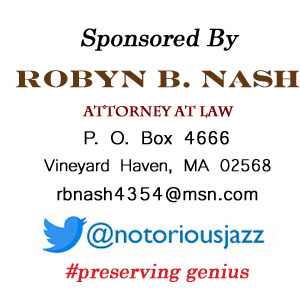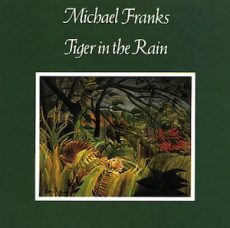
Daily Dose Of Jazz…
Michael Franks was born September 18, 1944 in La Jolla, California and grew up with two younger sisters. Neither parent was a musician but they loved swing music, and his early influences included Peggy Lee, Nat King Cole, George Gershwin, Irving Berlin, and Johnny Mercer. At age 14 he bought his first guitar, a Japanese Marco Polo for $29.95 with six private lessons included. Those lessons were the only music education that he received.
While at University High School in San Diego,California he discovered the poetry of Theodore Roethke with his off-rhymes and hidden meter. He began singing folk-rock, accompanying himself on guitar. Studying English at UCLA, Michael discovered Dave Brubeck, Patti Page, Stan Getz, João Gilberto, Antonio Carlos Jobim, and Miles Davis. Never studying music in college or later, he earned a Bachelor of Arts degree from UCLA in comparative literature in 1966 and a Master of Arts degree from the University of Oregon two years later. He returned to UCLA to teach after a stint in a PhD program in Montreal.
During this time Franks started writing songs, starting with the 1968 antiwar musical Anthems in E-flat and went on to compose music for films. Sonny Terry and Brownie McGhee recorded three of his songs, on their album Sonny & Brownie. Franks played guitar, banjo and mandolin on the album and joined them in touring. In 1973, he recorded an eponymous debut album, later reissued as Previously Unavailable.
In 1976 he released his second album The Art of Tea featuring the Crusaders and which saw Franks begin a long relationship with Warner Bros. Records. Subsequent albums came in 1977 and 1978 and through the 1980s. His move to New York City featured more of an East Coast sound on his albums and performance. Since then, Franks has recorded more than 15 albums.
He has recorded with a variety of well-known artists, such as Peggy Lee, Dan Hicks, Patti Austin, Art Garfunkel, Brenda Russell, Claus Ogerman, Joe Sample, and David Sanborn. His songs have been recorded by Shirley Bassey, Kurt Elling, Diana Krall, The Manhattan Transfer, Leo Sidran, Veronica Nunn, Carmen McRae, and Natalie Cole, aming other pop and rock artists.
Vocalist and songwriter Michael Franks, who plays guitar, banjo, mandolin, and cabasa, is still active and working on a new project.
More Posts: banjo,cabasa,guitar,history,instrumental,jazz,mandolin,music,songwriter,vocal
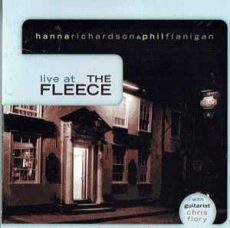
Daily Dose Of Jazz…
Hanna Richardson was born on May 16,1956 in Alexandria, Virginia and as the daughter of a foreign service officer, much of her childhood was spent overseas. At the age of seven, while living in South America, she began piano lessons and also sang at home with the family. 1965 saw her father retiring to Geneva, New York where she met bass player Phil Flanigan while in high school.
College saw her singing professionally, first rock and folk music, then hearing an Ella Fitzgerald record she turned to singing jazz. However, it was the singing style of Maxine Sullivan that was to have the greatest impact upon her. After college, Richardson moved to Rochester, New York and continued to pursue her interest in both folk music and jazz and she also taught herself to play the mandolin.
A move to Syracuse, New York had her working at Syracuse University and becoming Assistant Dean in the School of Management. She sang professionally during this period as a session back-up singer. Connecting again with Flanigan who had toured and recorded with Sullivan, and began singing with him. They married and recorded their debut album, Something To Remember You By, in 2002.
Vocalist Hanna Richardson, who has released a half dozen albums, continues to regionally perform, record and educate.
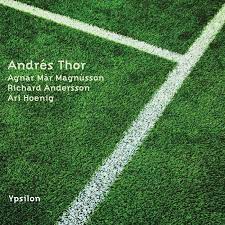
Daily Dose Of Jazz…
Andrés Thor was born on December 27, 1974 in Hafnarfjordur, Iceland, a little harbour town near Reykjavík, Iceland. He began his musical studies at age 12 and his initial influences were glitter and hippie rock bands such as Led Zeppelin, The Doors, Jimi Hendrix and Bon Jovi.
During his teens was when he first heard the music of John Coltrane and Pat Metheny which led him to become more fascinated with jazz. He soon started studying with some of Iceland’s finest jazz educators at the FIH music school and after graduating his musical quest brought him to study at the Koninklijk Conservatorium (The Royal Conservatory) in The Hague, The Netherlands in 2000.
Finishing his Bachelors and Masters degrees by 2006 he went on to study under the guidance of Wim Bronnenberg, Peter Nieuwerf, Eef Albers, John Ruocco and Hein v/d Geyn as his main teachers. He also attended workshops and masterclasses lead by Michael Brecker, Kurt Rosenwinkel, John Abercrombie and Avishai Cohen, as well as performing with the late Michael Brecker and the Royal Conservatory Big Band in concert.
Living and studying in the Netherlands lead to the first recording featuring Andrés as a co-leader of the organ trio Wijnen, Winter & Thor. The band featured songs by all members of the trio. Since then he has been based and working in and out of Iceland and has released five albums under his own name and a handful of albums in collaboration. He has been active in various collective projects and as a sideman with bands like ASA trio, Icewegian, The Viking Giant Show, BonSom, Andreas Dreier quartet and Music with Z to name a few.
Thor has been an active performer in Scandinavia, Europe and America, as well as a session musician in studios and educator in Iceland. He doubles on the mandolin, banjo and steel guitars. Guitarist Andrés Thor continues to record and perform blending his positively ambrosial tonal palette with the elegant harmonic substance and incisive, ornamented cross-rhythms.
More Posts: banjo,guitar,history,instrumental,jazz,mandolin,music
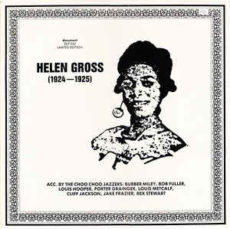
Daily Dose Of Jazz…
Sterling Bruce Conaway was born on October 26, 1900 in Washington, D.C. and learned to play the banjo and mandolin. His early career was spent playing with fellow Washingtonian Duke Ellington in their hometown. Relocated to Chicago, Illinois he joined the band of Carroll Dickerson.
He played in Cyril Fullerton’s band in 1924 and recorded with Helen Gross on ukulele. By the late 1920s he moved to Europe where he worked with Eddie South, Noble Sissle, Freddy Johnson, Freddy Taylor, and Leon Abbey. During this period in his career Sterling led several groups as well.
1936 saw him in Bombay, India playing with Crickett Smith, however, three years later returned to the United States. Banjoist and mandolinist Sterling Conaway continued to perform in big bands and leading his own groups until his passing away in November 1973.
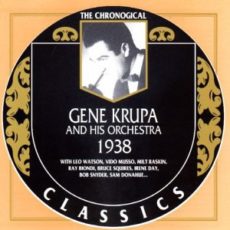
Daily Dose Of Jazz…
Ray Biondi was born Remo Biondi on July 5, 1905 in Cicero, Illinois. As a child he started with violin and his early training was classical under the supervision of several teachers from the American Conservatory of Chicago. Mandolin followed at age 12 and it became his gateway into the world of string bands, and added guitar and then trumpet into his musical arsenal.
In 1926 he began playing professionally with the Blanche Jaros Orchestra, based out of Cicero, and the next year he started an eight-year period of heavy freelancing in Chicago, enjoying new contacts such as trumpeter Wingy Manone, reedman Bud Freeman, and Earl Burtnett put Biondi in his lineup as a violin and trumpet double. This band took him on a series of tours Kansas City, Cincinnati and New York. this led to a gig with clarinetist and saxophonist Joe Marsala and playing guitar whenever Eddie Condon double booked himself.
In 1938, Gene Krupa hired Ray solely as a guitarist except on an orchestra project where he double as a violinist. A year later he left the band and formed a series of small groups as a leader and one band had a long residency at Chicago’s 606 Club. He then opened a short-lived club himself, and Krupa took him back on the road in the early ’50s. He then began to get session guitar and mandolin work in some genres outside of straight jazz. With Pat Boone and the Crew Cuts as doo wop became a new musical style.
By 1961, he had begun a serious shift to teaching all of his instruments except the trumpet, but continued gigging with groups both large and small, including the orchestra of Dick Schory in the former case and stride pianist Art Hodes in the latter. Violinist Ray Biondi passed away on January 28, 1981 in Chicago, Illinois.
Sponsored By

![]()
#preserving genius





